Visual
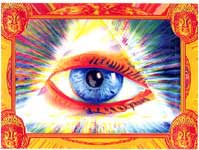 Language
©
Language
©
Visual language is picture language.
"One picture is worth a thousand words."
Words that are pictures say more than words that are sounds.
According to conventional ideas about language, our languages are collections of animal cries and mimicked sounds that evolved into languages in pre-historical times. According to the "phonetic" theory of the alphabet, our Roman alphabet is a set of abstract phonetic symbols that have no meanings other than serving as symbols for sounds. By those definitions, our language is a collection of arbitrary sounds that we write in meaningless symbols. That is not true.
Why is it important to reexamine our common beliefs about languages?
Visual language can communicate across linguistic and cultural barriers more effectively than phonetic languages can. We live in a warring world. The population of this planet is increasing dramatically. Competition for limited resources is becoming more intense. The distribution of resources is becoming more unbalanced. Wars between nations and conflicts between cultures are becoming more frequent. Advancing technology and increased population are making those wars and conflicts more dangerous to greater numbers of people. We need better cross-cultural communications than purely phonetic languages can provide. Better communications among warring states and conflicting cultures can reduce some of the dangers and tensions in this age of globalization.
Our language is visual language.
Contrary to common belief, the letters of the alphabet are pictures. They're not purely phonetic symbols. Our alphabet contains fifty-two pictures. Every letter, large and small, is a distinct picture having a meaning of its own. Letters that are pictures add up to words that are pictures. Picture words make visual language. Not all of the words in our language are picture words, but many of them are. For instance, our word Man is a picture word. The word Man is composed of picture letters that add up to its meaning. The word Man is composed of symbols for Mother + childbirth + son. The word Man is not strictly a noun of masculine gender. The letters that are pictures add up to a picture word of mothers and sons that includes all of Mankind.


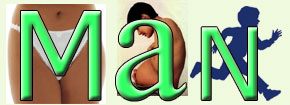
That is visual language.
See the
Illustrated Alphabet Pages on this website to view a complete set of pictures for all fifty-two letters.
The letters of our alphabet are Pagan religious icons from the legend of Isis and Assur.
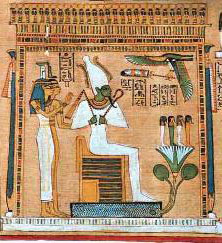
The Isis legend says that there was an ancient king, Assur (Osiris), who was the first king of the first kingdom on earth. A company of evil conspirators murdered Assur. They hacked his body into pieces, and scattered his severed parts. Isis gathered up the scattered parts of Assur and put them back together. She resurrected Assur from the dead. That is the core of the Pagan foundation legend. There was religion before Jesus, but there was no Christianity before Jesus. There was religion before Isis, but there was no Pagan religion before Isis. Pagan religion and culture began with the resurrection of Assur.
The resurrection of Assur is an allegorical tale. Isis was born sometime near the dawn of the historical era (6,000 years ago). The Assur legend goes back into prehistorical times following the melt down of the Ice Age (8,000 to 11,000 years ago). Assur was an ancient enlightened wise man like a Buddha, Confucius or Moses long before the dawn of writing. His works and teachings have come down to us in the form of verbal legends. Assur was a deified ancestor. He was already ancient before Isis was born. She didn't resurrect the corpse of a man who had been dead for thousands of years. She resurrected an ancient, fragmented, and defunct religion. Isis also resurrected his royal bloodline via her own womb. Pagan religion was a mixture of genealogy, politics and education.

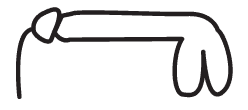
Assur was the father god of the pagans.
After she resurrected Assur from the dead, Isis copulated with her resurrected king. From that union, she conceived and gave birth to their son, Heru. Assur went on to become the King of the Afterlife and Judge of the Dead. He was the original "Adam" long before Abraham, Moses, and Judaism. Isis went on to become the Earth Mother Goddess, the Pagan's "Eve." Heru went on to become the father of Pharaohs and the progenitor of the bloodline of "divine" kings. The phallus of Assur was one of the important parts that she gathered together for his resurrection. Without that important part, she couldn't have copulated with her resurrected king. She couldn't have become the Pagan's Eve or the Earth Mother Goddess. Assur couldn't have become the Father God of the Pagans.
The severed parts of Assur that Isis gathered are now letters of our alphabet.
The capital letter P is a picture of the phallus of Assur.
Typographers have got the letter P upside down. It should be an erect phallus.
The (minuscule) small letter g is a picture of a seed sprout. The sound of g is derived from the sound of someone gagging on a kernel of grain.
The majuscule (capital) letter N is a picture of the striding legs of Heru.
Strictly speaking, the capital letter N represents the striding legs of the God son, Heru. However, the letter n generally is a masculine determinative that represents any son or man.
Standard English dictionaries spell the name pagan with a small letter 'p' and define pagans as simple rustic country folks who had no distinct religion or culture. That is not true. The dictionary definition of pagan and spelling the name with a small letter 'p' was a deliberate Christian attempt to deny Paganism the status of a real religion. The name Pagan is a picture word that reveals clearly who the Pagans were.
Pagans were the sons of the seed of the phallus of Assur. The name Pagan spelled with a majuscule letter 'P' is a name composed of letters that are pictures. The pictures in the name are the phallus of Assur + childbirth + a seed sprout + childbirth + son. The letters that are pictures add up to a picture word Pagan that defines Pagans as sons of the seed of the phallus of Assur.
That is visual language.
Addendum
Conventional ideas about languages are partly correct. Many of our words are sounds that evolved into language in pre-historical times. Some structural parts of our languages remain in use from primitive times. However, evolution doesn't account for all that our languages are. Our ancestors domesticated wild plants, wild animals, wild men, and wild languages that had evolved "naturally" from earlier times. The languages we speak today are domesticated and cultivated versions of those original "wild" languages.
Language is culture. Religion is culture. Pagan genealogy and religion was widespread in the world in ancient times before the rise of Western civilizations. Pagan religion and culture were more widespread in the ancient world than Biblical religion is now. Pagan religion defined the culture and refined the languages of the early civilizations. Languages and cultures of diverse nations and tribes all over the world are rooted in Pagan religion.
The Pagan religious icons that are letters of the alphabet, and the stories related to them, contain the seeds of universal culture and universal language.
Pagan culture was the nearest thing to a universal culture that this world has ever known. Pagan religion added concepts to those cultures and words to their languages that the original cultures and languages didn't have. Those original wild languages were limited mediums of thought and expression. Pagan religion made great advances in the mental development of people and in the power of their languages. Pagan religion gave people the power to organize into much larger and more effective communities than had previously been possible. We need to retrace and understand that ancient culture to gain the benefit of that experience in building a 'World Culture' civilization in our future.
Resurrect Isis. Let a new global civilization be born from the 'World Culture' civilization of our past.
Reader responses are invited.
Alphabet Source Illustrations
. . . Alphabet Page A . . . Sunwing

If Christian monks had invented the alphabet, the alphabet would be full of Christian symbols – the stations of the cross, the crown of thorns, and so on. According to the Pagan foundation legend, Thoth was the "scribe of the gods." Thoth was the "inventor of writing." Pagan monks created our alphabet. They used Pagan symbols for the letters. The phallus of Assur that Isis gathered is the capital letter "P" in our alphabet.
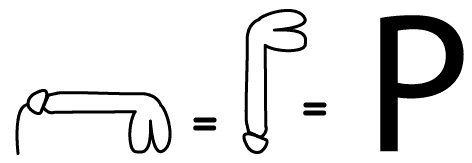

The minuscule letter g is a picture of a seed sprout.
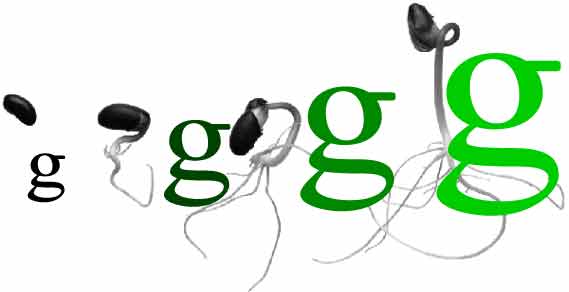
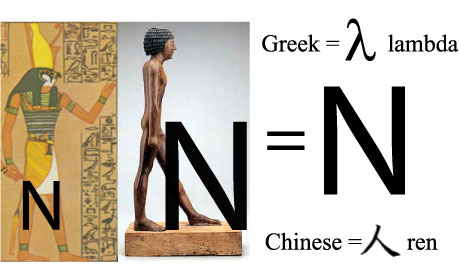
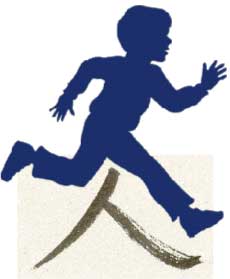
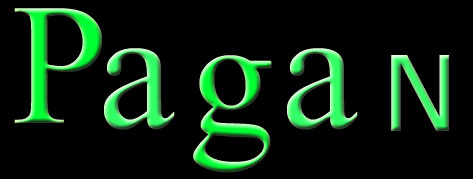
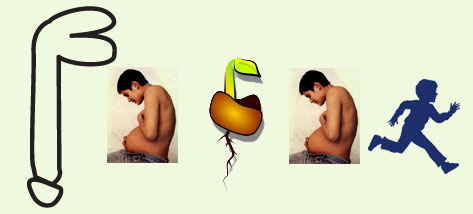
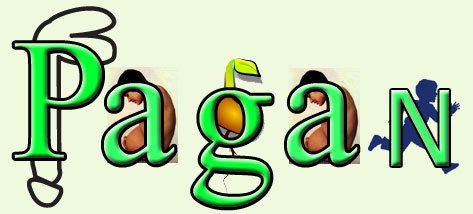
See the
Illustrated Alphabet Pages on this website to view a complete set of pictures for all fifty-two letters.
Send e-mail to:
Resurrect Isis. Please refer to "Visual Language" when responding to this page.
Return to Home Page . . . Return to Table of Contents Hub
Links to related topic pages: